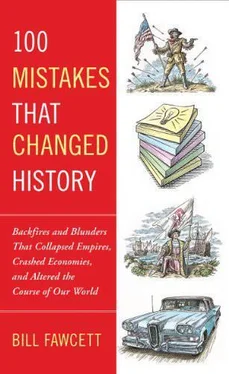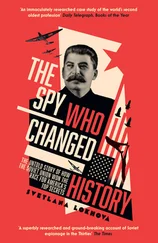Soon, with the election in full swing and Gracchus appearing before large crowds all over Rome, his trial in the Senate began. The tribune began promising the crowds much more radical changes. These included shortening the time men needed to serve in the legions in order to get the free land; allowing common people, not just the Senators, to serve as jurors in major cases; and opening Roman citizenship to allied peoples who served in the legions or otherwise aided Rome. These ideas may not seem radical today, but when combined with the threat to the power of the Senate he already represented, this was truly radical stuff and a direct threat to their power and wealth.
On the day Rome voted, feelings were at a fever pitch as the trial continued. In the street in front of the Senate, a threatening crowd grew. Soldiers were called in. The trial became more of a series of threats and counterthreats, with tempers running high. Finally, dozens of Senators came off their benches and literally beat Tiberius Gracchus to death with the legs of their chairs. The Roman Senate was made up of some very tough men, and you can see they were willing to kill to protect themselves and their power. This was something Julius Caesar should have been aware of a century later when he usurped their power, but that was another mistake and not just his. The tribune’s body was thrown into the Tiber to prevent any embarrassing funeral, and the crowd in front of the Senate Building was violently dispersed by the army.
When word of Gracchus’ murder spread through Rome, many parts of the city rioted. In an ironic attempt to protect themselves, the Senate quickly approved almost all of Gracchus’ reforms. This helped to quell the riots and restore their support among the population. The mistake of murdering the populist leader effectively forced the Roman Senate to concede to everything the tribune had demanded. Because of these changes, power in Rome gradually shifted from the noble families to the masses and the army. The people who lived in Rome began to learn that they were more powerful than the Senators who ran their government, and the army learned that they could control who among different factions controlled the Senate. Because of Gracchus’ willingness to ignore the laws, combined with the Senator’s greed and then fear, Rome did not have a truly stable government for almost a century. And that century ended in the civil wars. In 49 BCE, Gaius Julius Caesar used the support of the mobs and his legions to take complete control of all of Rome, and the power of the Senate was lost forever.
12. PLAYING TO THE ENEMY’S STRENGTHS
Trapped in Alesia
52 BCE
The Battle of Alesia in 52 BCE was the final conflict that determined whether the Roman or the Celtic way of life would dominate northern Europe. It was the culmination of the five-year conquest of Gaul (France, Belgium, Denmark, and Luxembourg) by Gaius Julius Caesar. The entire war and Julius Caesar’s intelligence and courage were made famous even as it was fought by that brilliant bit of self-serving propaganda, Caesar’s Gallic Wars.
In 60 BCE, three men agreed to share control of Rome. These were Crassus, Pompey, and Julius Caesar. While theoretically equals, each strove to be the first among equals. Crassus was very rich. Yes, the old phrase “rich as Crassus” refers to him. Crassus had also proven himself a competent general by defeating Spartacus and his slave rebellion. Pompey also was a proven general, having won a number of victories in the name of Rome. The younger Julius Caesar had the greatest need to prove himself and the most to gain.
So Crassus went off to Syria, where he managed to get himself killed while losing two entire legions to the Parthians. Pompey mostly stayed in Rome. He was already rich with the spoils of his earlier victories and had a great reputation. Caesar saw where the greatest opportunity was and chose to take over the province known as Transalpine Gaul. This was really the most northern parts of Italy and much of the south coast of France. This province gave him a base from which he could conquer the rich lands of the Gallic tribes.
From 58 BCE until Alesia, Julius Caesar defeated one Gallic tribe after another. While not happy about the situation, no one tribe or local alliance could stand against his army of more than 50,000 highly trained legionnaires. It wasn’t until Julius Caesar was in northern Italy dealing with Roman politics that all the Gauls found themselves a leader. This was the charismatic and often brilliant Vercingetorix.
Through strong oratory and good politics, Vercingetorix managed to get almost all the tribes in Gaul to swear to follow him into rebellion. That summer, the Gallic leader put tens of thousands of his warriors through a regimen of training. Then in the late fall, he led his army against the Roman garrison at Orleans (then called Cenabum). The city fell, thousands of Romans were killed, and Caesar suddenly had a major problem. His political strength came from being the conqueror of Gaul, and Gaul was looking very unconquered. To make things worse, Vercingetorix was a very good general, and he had chosen Orleans because the city was the main Roman grain storehouse. His army was now living off the Roman army’s supplies, and Caesar’s legions could expect short rations without them. In fact, Vercingetorix used food as a weapon throughout his rebellion, often effectively using scorched earth tactics against Caesar. Ironically, starvation would ultimately cause his surrender.
Caesar rushed back to Gaul and united the legions that had been spread out in winter quarters. For the rest of the winter, Caesar either chased Vercingetorix or captured the cities that were in rebellion. After capturing Loire, today’s Paris, the Roman army turned toward the richest city still controlled by the rebelling tribes, Provence. Vercingetorix correctly guessed Caesar’s intentions, but the mistake he made was in how he reacted, and that reaction was what lost the war.
To understand the mistake Vercingetorix made, you need to look at the strengths of the two sides. You have the Romans, who were technological, highly organized, and efficient at fortification and siege weapons. The Roman soldier was not individually a great warrior. He was smaller and shorter than most Gauls and carried a far shorter sword. One-on-one, the Gauls often won any fight. But the Romans never fought in a “heroic” manner involving individual duels. Fighting as part of the Roman legion, they could take on twice their number or more and be assured of victory.
The Gallic warriors were a different breed. They were warriors and not soldiers. While Vercingetorix’s training had helped make them more effective as an army, personal heroics were still highly valued. They were not experienced at siege warfare, and while quite capable of building fortifications, they were not as adept in attacking or holding them. This is demonstrated by the number of Gallic cities that had fallen to Caesar that decade. The Gauls were masters at moving quickly and hitting hard.
Knowing where Caesar was going and that he had an army about twice as large as the Romans’, Vercingetorix moved his army to a strategic point along the route to Provence. Then he made a move that almost ensured defeat.
The city of Alesia had great natural defenses. It was set on steep cliffs with rivers on two sides. Vercingetorix knew that the Romans could not just bypass his army or it would attack them from the rear while they besieged Provence. So if they could not go past, he assumed they would have to stop and lay siege to his army, held up in what was perhaps the best defensive position in Gaul. What he did not realize was that by doing this, he was in a situation that played into just about every strength of the Romans, while neutralizing the personal courage and endurance that set apart his own forces.
Читать дальше












